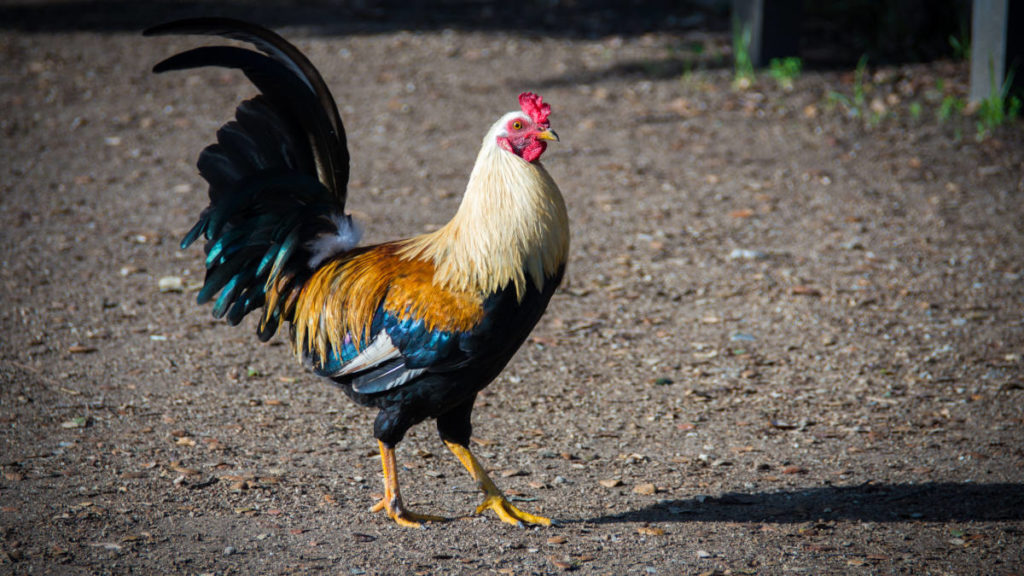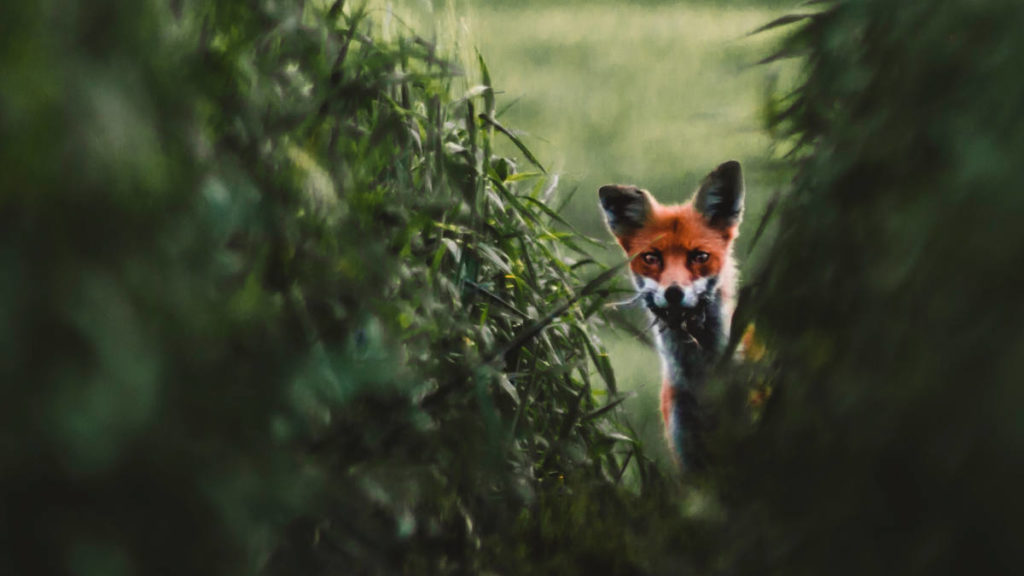If you’ve ever spent time in a rural area, you know that no melodic chirrup from your iPhone can compete with the klaxon cock-a-doodle-doo of a crowing rooster to rouse you from sleep. But these crested fowl serve more purpose than to stir you from the downy nest of your comforter.
The rooster holds the role of protector, regularly guarding its flock against predators. It also serves a flock mediator of sorts, ensuring the health of the flock by enforcing the proverbial “pecking order.” And, economically speaking, a rooster is indispensable for increasing the size of the flock and, subsequently, a farmer’s bottom line.
But there’s much more to know about the male chicken and much more to consider when raising them. For instance, how long do roosters live? What can poulterers do to prolong the life of their feathered family? Have we “beaked” your interest? Read on for some helpful information, including tips on what to expect and how to enhance your rooster’s lifespan.
Why Knowing Matters
One reason it’s important to be aware of a rooster’s lifespan is because a rooster’s reproductive ability declines as it ages. While hens do not need roosters to lay eggs, if your goals extend beyond simple egg production, you’ll want to know just how long your rooster can be serviceable before having to introduce a new rooster to the flock.
Now, if egg production is your goal when raising chickens, it is a prudent practice to weigh their productivity against the cost of care and feeding. This advice applies to roosters as well. While it is simple to track whether a hen is being productive by tallying the number of eggs she lays, you may be wondering how to calculate a rooster’s productivity.
Just like hens, roosters have a measurable productive period in their lifespan. As they age, the quality of their sperm begins to depreciate leading to lower chick production. One fairly simple way to verify if a rooster’s fertility is on the decline is through visual observation. Periodically crack an unincubated egg into a clear bowl. Examine the yolk on the top and bottom. You’re looking for a tell-tale “bullseye” to verify a properly fertilized egg. This “bullseye” is known as a blastoderm and is a sign your rooster is adequately performing his fertilization duties. If you detect only a small, irregular spot, or blastodisc, it may be time to bring in younger reinforcements.
Which Came First: The Rooster’s Life Cycle
Of course, you’ve heard the old riddle. Which came first, the chicken or the egg? While scholars have debated the subject for centuries, the cycle of every chicken’s life today goes through three major phases: egg, chick, and adult.

Egg
Every chicken starts as an egg. After a rooster has mated with a hen, she will lay a fertilized egg. The process to lay just one egg takes anywhere from 21-27 hours. This cycle will continue until an average of twelve eggs have been laid. If the eggs are not gathered, the hen will then gather the eggs into what’s known as a clutch. Then the incubation process begins as she lays on the clutch and the baby chicks grow inside their shells.
Chick
Before it pecks a whole through the eggshell to greet the world, a chick will develop inside the egg for almost a month, averaging around 21 days. It is sustained by the nutrient-dense yolk and gets its air from the nearly 17,000 tiny holes in the porous, but incredibly sturdy, eggshell. The design of an eggshell is an engineering marvel, able to withstand the shifting weight of the brooding mother hen. When fully developed, the chick makes use of a sharp projection on its beak, an egg tooth, to tap its way out of the egg. This pecking process is known as pipping.
Most chicks appear a bit scrawny at birth, formless and featherless. But in just under a week, its first feathers will sprout and in less than two weeks, it starts to take on a more solid shape as its bones develop. Through the guidance of their mothers, the chicks will learn how to participate in typical life skills, such as foraging and roosting.
Adult
When a hen reaches sexual maturity and starts laying eggs, it is considered an adult. While this stage occurs at different times for different breeds, you will typically see this development somewhere between sixteen and twenty-four weeks. In roosters, maturity is reached closer to four months.
The average adult hen, raised in captivity with adequate care, can have an average lifespan of up to 5-10 years. Depending on the breed and size, some can live upwards of 15 years. There are even records of hens reaching ages as old as 22, like Muffy, a Red Quill Muffed American Game chicken from Maryland. This Guinness World record holder beat out Matilda, a Red Pyle chicken from Bessemer, Alabama who worked alongside magician Keith Barton and made guest appearances on Jay Leno.
Roosters, on average, live decidedly shorter lifespans, however. Typically, a rooster will live anywhere from 5-8 years. This may be due to the elevated stressors the average rooster encounters throughout its life such as defense of the flock, etcetera.
Rooster Health Factors
Multiple factors play a part in determining how long a rooster will live. Is it a domesticated animal, or does it live in the wild? Is it kept in coop with sanitary conditions? What breed is the rooster? You always want to examine the big picture when you’re considering raising roosters and choosing which breed might be right for you, but there are some key factors which affect a rooster’s longevity.
Predators
There’s a fox in the henhouse! The familiar idiom can mean everything from someone tempted to pilfer to simply there’s a predator amongst the prey. It originated as a barnyard alarm warning that a wily fox was about to have himself a chicken dinner. Foxes are a natural predator of chickens and roosters, but they aren’t the only ones. Particularly if you live near rural, wooded areas, you could find yourself dealing with possums, raccoons, hawks and other birds of prey, bobcats, and even snakes! But a predator we often overlook is ourselves—humans. While roosters are not part of a traditional American menu, in other countries, roosters are frequently integrated into the cuisine, like in the French dish coq au vin.

Living Conditions
Several major components of a rooster’s environment can impact its health and longevity: temperature, cleanliness, and quality of life. While roosters can reasonably tolerate mercury dips and rises, if the weather becomes too extreme, they need adequate shelter to survive. Like dogs, roosters don’t sweat. If the weather is too hot, they can succumb to health-threatening issues like heat stroke.
The shelter should be free of major drafts and should provide a raised roosting area as well. Regularly removing soiled bedding and feathers. Give the coop a thorough soaking with a safe cleaning agent—many folks opt for a simple vinegar and water solution—then scrub vigorously before rinsing again. Install clean, dry bedding and your flock will stay healthy and happy. Disregarding this critical task can not only shorten the lifespan of your birds, but can have adverse effects on your family, too, as bacteria strains like Salmonella, E. Coli, and Listeria can flourish in ill-maintained coops.
Genetics
It’s hard to pinpoint exactly how many chicken breeds there are worldwide, though some have estimated that over five hundred exist worldwide. The American Poultry Association recognizes only a fraction of that number, closer to fifty large breeds, with some additional bantam breeds as well. Whether bred for their plumage, size, or other feature, each particular breed comes with its own life expectancy.
Size
The bigger they are, the harder they fall—or the shorter they live. Large chickens tend to live shorter lives than their smaller counterparts. Big birds like the Brahma have to work harder at maintaining their large body mass and wear out quicker than a smaller bird, like a Rosecomb bantam. The typical bantam can easily live for a decade if maintained properly with a good diet. Many bantam birds can live to 10 years old or more if properly cared for.

Breed
Beyond size, a rooster’s breed is a fairly reliable indication of how long it will live. Many heritage breeds, like the famous Rhode Island Red, demonstrate a proven hardiness living for eight years or more. Conversely, as you delve into birds bred for specific traits, you start to see a marked decline in how long they can live, potentially affecting things like susceptibility to illness, parasites, or other disease. Keeping all these things in mind will make sure your roosters don’t run “a-fowl” of any undesirable health issues.
Grade-A Care: Tips for Healthy Roosters
To be a good egg and help your roosters live a long and productive life, there are several things you should be ready to provide your feathered friends:
Room to Roam
Let your roosters strut! While free-range is considered the best practice to ensure your birds are getting enough healthy movement, if your space does not allow for it, build a run to allow them access to adequate exercise.
Proper Shelter
We’ve already touched on the topic, but ensure your flock has a properly sealed, clean coop to take shelter from the elements and potential predators. Keeping predators in mind, be sure to secure all areas your birds may roam, including the run as well as the coop.

Diet
You’ve heard what’s good for the goose is good for the gander, but what’s good for the chicken isn’t necessarily what’s good for the rooster. Roosters require a slightly different diet than egg-laying hens in order to retain optimum health. While both hens and roosters are omnivorous, eating plants and animals, a hen needs a calcium-rich diet. Conversely, a rooster needs a diet higher in protein and lower in calcium. Ensure their diet is varied as well, in order they receive all necessary nutrients. This means including things like fruit, insects, and vegetables in addition to their regular feed.
Just tell me how long do roosters live!
So, as you can see, there’s a wide variety of factors that can affect how long a rooster can strut his stuff. Things like breed, size, living conditions and more all play a part in determining just how long a rooster will last. However, with proper care and feeding, your birds can live up to a decade or longer providing you with years of productive service and companionship—and that’s no yolk.
Now I could have just said that at the beginning of the article, but knowing all the factors that go into rooster longevity is of far more importance for future rooster owners.
Do you own a rooster? How old is he? Give us a comment below and we can talk turkey…I mean chicken.
